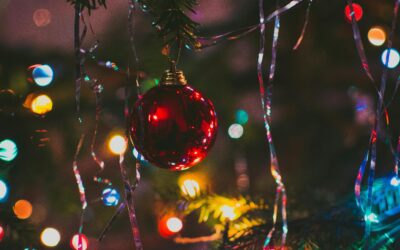Preparing for storms and heavy rains is essential to protect your
property and ensure the health of your plants and lawn. Severe weather can lead to
flooding, soil erosion, and damage to trees and shrubs. Here are some crucial steps to
help you prepare your lawn and garden for the impact of heavy rain and storms.
Assess and Improve Drainage
Evaluate Your Landscape
The first step in preparing for heavy rains is to assess your landscape’s drainage
capabilities. Poor drainage can lead to standing water, which can suffocate plant roots
and create breeding grounds for mosquitoes.
Install Drainage Solutions
Consider installing French drains, dry wells, or swales to divert water away from your
home and garden. These systems can help manage runoff and prevent water from
pooling in low-lying areas. Additionally, ensure that your gutters and downspouts are
clean and direct water at least 10 feet away from your foundation.
Soil Preparation
Aerate Your Lawn
Aerating your lawn can improve soil structure and enhance water absorption. This
process involves perforating the soil with small holes to allow air, water, and nutrients to
penetrate deep into the roots. Aeration can help reduce soil compaction and prevent
runoff during heavy rains.
Add Organic Matter
Incorporating organic matter such as compost into your soil can improve its ability to
absorb and retain water. Compost enhances soil structure, increases nutrient content,
and promotes healthy root growth, making your plants more resilient to heavy rainfall.
Plant Selection and Placement
Choose Native Plants
Native plants are typically more adapted to local weather conditions and soil types.
They have deeper root systems that help stabilize the soil and reduce erosion. Consider
planting native grasses, shrubs, and ground covers that can withstand heavy rains and
improve soil health.
Strategic Planting
Place plants with similar water needs together and consider the mature size of plants
when positioning them in your landscape. Proper spacing and placement can reduce
competition for water and nutrients, ensuring that plants remain healthy even during
adverse weather conditions.
Mulching
Benefits of Mulching
Mulching helps retain soil moisture, regulate soil temperature, and reduce erosion. It
also prevents soil from becoming compacted and improves water infiltration.
Mulch Application
Apply a 2-3 inch layer of organic mulch, such as wood chips or shredded bark, around
the base of your plants. Be sure to keep mulch away from the stems of plants to prevent
rot. Mulching helps to slow down the movement of water, allowing it to soak into the
soil more effectively.
Tree and Shrub Care
Prune and Maintain Trees
Regularly inspect and prune your trees and shrubs to remove dead or weak branches
that could break during a storm. Proper pruning helps maintain the structural integrity of
your trees and reduces the risk of damage to your property.
Secure Young Trees
Stake young trees to provide additional support during strong winds. Use soft ties to
secure the trees to the stakes, allowing for some movement to promote strong root and
trunk development. Ensure that the stakes are removed after the trees are established
to prevent girdling.
Lawn and Garden Maintenance
Regular Maintenance
Keep your lawn and garden well-maintained to reduce the risk of storm damage.
Regularly mow your lawn, remove debris, and check for signs of disease or pests.
Healthy plants are more resilient to the stress of heavy rains and storms.
Create a Rain Garden
A rain garden is a shallow depression planted with native vegetation that can capture
and absorb runoff. Rain gardens help reduce erosion, filter pollutants, and recharge
groundwater. They are an effective way to manage stormwater and enhance the beauty
of your landscape.
Emergency Preparedness
Prepare for Power Outages
In the event of a storm, power outages are common. Prepare by having a backup
generator and ensuring that it is in good working condition. Store enough fuel to last for
several days and have flashlights, batteries, and other emergency supplies on hand.
Protect Valuable Plants
If a severe storm is forecasted, consider covering delicate plants with burlap or other
protective materials to shield them from wind and heavy rain. Move potted plants
indoors or to a sheltered location to prevent them from being damaged.
Have a Plan
Develop an emergency plan for your landscape. Identify which plants and structures are
most vulnerable and prioritize their protection. Keep a list of emergency contacts,
including local arborists, landscapers, and utility companies, in case you need
immediate assistance.
Conclusion
Preparing for storms and heavy rains is essential to protect your
property and maintain the health of your plants. By assessing and improving drainage,
selecting the right plants, mulching, and maintaining trees and shrubs, you can minimize
the impact of severe weather. Additionally, regular lawn and garden maintenance,
creating rain gardens, and being prepared for emergencies will ensure that your
landscape remains resilient.
At Jack’s Lawn Care & Landscaping, we are committed to helping you protect and
maintain your outdoor spaces. Our team of experts is here to provide professional
advice and services tailored to your specific needs. Contact us today to learn more
about how we can assist you in preparing your landscape for any weather condition.



